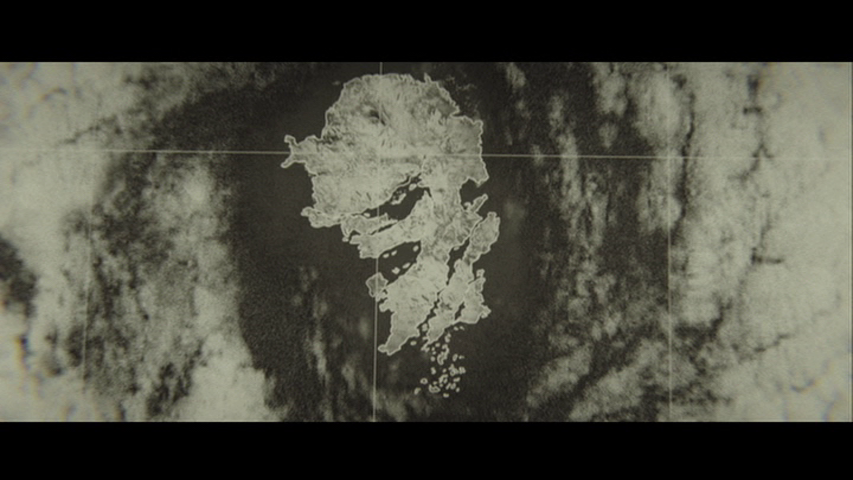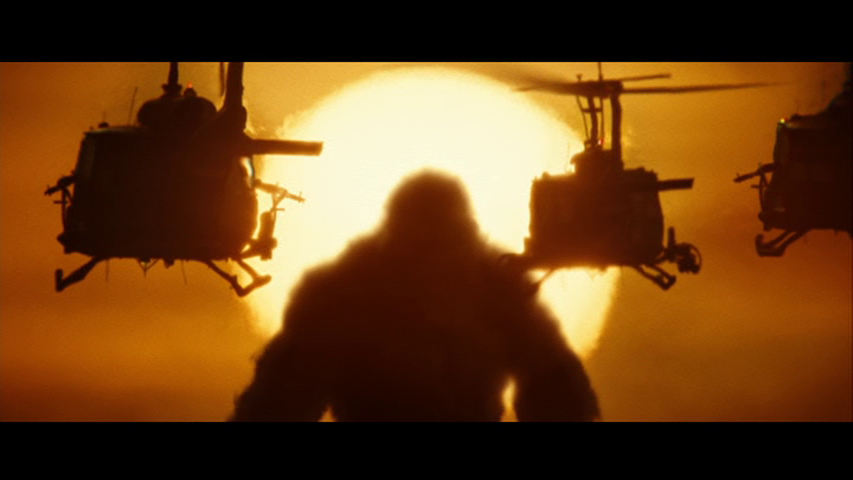Last week, Lost in Translation took a look at King Kong vs Godzilla, a match up between the giant ape that create the giant monster movie and the walking, breathing warning about atomic power that was inspired by him. Kong, though, has had several remakes, throughout the decades, the most recent being Kong: Skull Island.
One theme missing from King Kong vs Godzilla was the price of obsession. Carl Denham’s push to discover and bring back Kong led to a giant ape rampaging through Manhattan. However, Dunham never really paid the price for his obsession. Kong did. In 1933, horror movies and monster movies didn’t have the distinct types of victims that exist today, but today’s distinctions are a result of the Hays Code and subsequent movie ratings systems.
Today, there are three types of victims in a horror or monster movie, determined by type of victim. The first is the redshirt, whose only role is to allow the monster to demonstrate what it can do. Redshirts are lucky if they even get a name in most films. The second type is the deserving victim, someone who goes out of his or her way to cause others pain and receives a karmic reward via the monster. This victim tends to give sympathy to the monster. The third victim is the sympathetic victim, whose death is meant to get the audience cheering the heroes against the monster. This type of victim tends to have on screen development and is generally a likeable character. While not from a monster movie, Dead Meat from Hot Shots is a prime example, if exaggerated.
Kong: Skull Island was released in 2017 and starred John Goodman as Monarch executive Bill Randa, Samuel L. Jackson as Col. Preston Packard, Tom Hiddleston as ex-SAS member James Conrad, Brie Larson as photographer Mason Weaver, Corey Hawkins as Monarch geologist Houston Brooks, and John C. Reilly as US Army Air Force Lt Hank Marlow. The film moves the time and place of the film, from then-current 1933 in King Kong to just days after the withdrawal of American troops from Viet Nam in 1973. The beginning of the film, though, is in 1944 as the pilots of an American P-51 – Hank Marlow – and a Japanese Zero shoot each other down over an uncharted island. Both survive parachuting down and try to continue their fight on the ground, only to have the fight broken up by the arrival of Kong.
In 1973, Randa and Brooks need to push a senator for funding for an expedition to an island discovered only thanks to satellite photography. Randa needs to get the funding locked in before the war in Viet Nam is over, but the announcement occurs before he can get into the senator’s office. With some brow beating, Randa gets his funding plus a military escort. Col Packard’s helicopter squadron, now available thanks to the ceasefire and withdrawal, is assigned to join the expedition. Randa and Brooks find a tracker, ex-SAS Conrad, who charges far more than expected. Rounding out the crew, photographer Weaver is the last to board the ship.

The captain of the transport ship refuses to go through the electrical storms surrounding Skull Island, so Packard and his squadron fly through it. It’s a rough flight, but once through, the skies are clear and calm. Birds take off at the sound of the choppers. Everything is calm and peaceful except for the helicopters. The team lands to start their respective jobs. The helicopters are carrying seismic charges to determine what lays below the surface and split into two separate flights with a rendezvous point at the north end of the island. The charges are dropped, giving Brooks a good idea of what lies below. As Randa expected, the bedrock has a hollow layer.
The explosions do attract attention. Not all the wildlife on the island is frightened by the the explosions. Instead, one particular part of the wildlife is drawn out to see what is happening and he is not pleased. In most monster movies, military force seldom works unless there is overwhelming firepower. Packard and his squadron do not have overwhelming firepower, though they do hurt Kong. Kong does far more than hurt the squadron. All the helicopters are destroyed and several of Packard’s men are killed. The rest are scattered across the island.
There are two tales of obsession in the movie. The first is Col. Packard’s push to destroy Kong for killing his men. Packard is willing to lose everything he has in his desire for payback. The other tale is Randa’s. Kept a secret until Packard forces Randa to tell it at gunpoint, the Monarch exec was crew on board a US Navy ship in the Pacific during WWII. The ship was destroyed with the official records saying it was enemy action. The photo of the ship Randa carries show otherwise, with rents through the hull like it had been attacked by something with giant claws.
Packard and Randa are with one set of survivors. The second set, including Conrad and Weaver, are sticking to the plan and are trrying to make it to the north end of the island. They find waht looks like an abandoned ruin, which turns out to be not so abandoned. There is a tribe living on the island, who are used to the megafauna that lives there. Kong isn’t the only giant animal; there are also giant water buffalo who are content to leave things in peace. The tribe produces a second surprise, Hank Marlow.
Marlow and the Janapese pilot survived their encounter with Kong, mostly by not shooting him first. Neither had a loaded, working pistol, so they managed to escape and work togther once they found the tribe. The Japanese pilot died six years after crashing on Skull Island, killed by what Marlow calls “skullcrawlers”, giant two limbed lizards. The skullcrawlers live below the ground, in the hollow of the bedrock. The only thing keeping them from bubbling up and spreading like vermin is Kong, the last of his kind.
A third survivor, Jack Chapman, got caught alone. During the war, he was known in the sqaudron for all the letters he wrote to his son, Billy, to the point where his squadmates made fun of him for it. Alone, all he has is his letters to his son to keep him going. Alone, though, there’s nothing he can do when a skullcrawler finds him.
Kong: Skull Island doesn’t bring King Kong to New York. Kong is needed on Skull Island to keep the skullcrawlers in check. The hunt for Kong takes the entire movie, ending in a climactic battle between Kong and the largest of the skullcrawlers. Packard and Randa’s obsessions lead to their deaths, as fitting for deserving victims.

The movie takes its inspiration from films set during the Viet Nam war, including Platoon and Apocalypse Now. Kong is the largest he has been on screen. Instead of stop-motion animation, motion-capture CGI was used, giving the giant ape a more natural movement. The idea of beauty felling the beast didn’t quite make it into the film; while Kong met Weaver, it wasn’t like Kong meeting Fay Wray’s Ann Darrow. Yet that meeting did let Kong know that not every newcomer was out to kill him.
Kong: Skull Island was more focused on the perils of obsession, as seen with Packard and Randa. There’s also some world building going on. Randa and Brooks were researching the Hollow Earth Theory where there is another civilization lurking underneath the surface of the world. Skull Island proves to be a way in, except for the small problem of the megafauna living on and under the island. A post-credits sequence shows that Kong is not the only giant monster around.
The remake takes a different approach, one that reflects not just the time it is set in but the time it was made in. In 1933, explorers sought out new locations and brought back proof, from unusual flora and minerals to living creatures not found anywhere else. Today, concerns about potential ecological devestation caused by removing or introducing a species from an environment can point to specific examples, such as cane toads in Australia. Removing Kong from Skull Island to take him to New York City would cause environmental havoc in both locations, something known in 1973. Keeping the focus on the hunt for Kong, though, covers most of the original movie. While the escape up the Empire State Building is an iconic scene, it’s just the climax of the original Kong.
Kong: Skull Island does take its cues from the original. There is a scene where Kong is caught in old anchor chains during the climactic battle, taken from the 1993 film where Kong is chained on stage. In both the original and the remake, Kong escapes the chains. The sea voyage is cut back in the remake, treated as a montage, so that the film can get to the action on Skull Island sooner. In 2017, King Kong is a known element, so delays in seeing him are going to leave audiences unsatisfied.
The remake builds a new mythology for the original giant monster. Kong isn’t just a giant ape worshipped as a god by a primitive tribe. He is a defender of the island and everything that lives on it, giving the film depth. The original Kong was about the spectacle. Skull Island is about the human condition and ecological dangers, a reflection not of 1933 but of 1973 and of 2017.




